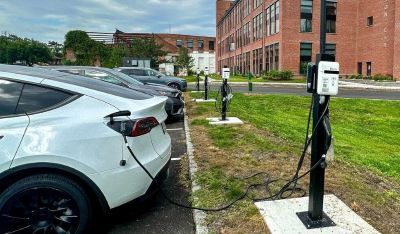


Apartment EV Charging: The Key to Equitable and Widespread EV Adoption
As a leading EV charger manufacturer in China, LiCB Charge delivers reliable AC and DC electric vehicle charging stations along with comprehensive charging solutions.
As the world shifts toward sustainable transportation, electric vehicles (EVs) are leading the way. EVs offer benefits such as lower emissions, reduced fuel costs, and quieter rides. However, the infrastructure to support them—especially for renters—is still lacking. While homeowners can often install chargers on their property, renters face unique challenges. With 44 million U.S. households living in rental housing, accessible charging must become a priority for everyone.
Apartment EV charging is no longer a future luxury—it’s an immediate necessity. With EVs already making up 8.6% of vehicle sales and expected to reach 13–29% by 2050, multifamily communities need to act now to meet growing demand.
Level 1 Charging: Accessible but Slow
Uses a standard 120V household outlet. Nearly universal but very slow—adding about 3–5 miles of range per hour, requiring over 50 hours for a full charge. Impractical for daily use with longer commutes.
Level 2 Charging: The Practical Residential Standard
Runs on a 240V circuit. Delivers up to 19 kWh, adding 15–40 miles per hour, charging most EVs fully in 4–10 hours. This balance of speed, cost, and convenience makes Level 2 chargers the best fit for multifamily properties.
Level 3 Charging (DC Fast Charging): Ultra-Fast but Commercial
Operates at 400–1,000 volts, delivering an 80% charge in under an hour. Best suited for highway rest stops and public hubs. High costs and infrastructure requirements limit practicality for most apartments, though large urban developments may consider them for quick top-ups.
Eases Range Anxiety
Fear of running out of battery without a nearby charger is a major barrier to EV adoption. Reliable apartment charging ensures renters can start their day fully charged, increasing confidence in EVs.
Adds Daily Convenience
Charging at home eliminates the need to schedule around public stations. Plugging in overnight makes EV ownership seamless.
Removes Barriers for Renters
Renters rely on landlords to provide charging infrastructure. Offering it as an amenity removes a significant obstacle and attracts eco-conscious tenants.
Can Be More Affordable than Public Charging
Public charger costs vary widely. Apartment charging offers predictable, potentially lower rates, with fees integrated into leases or offered at discounts.
Challenge 1: Infrastructure Constraints
Older buildings may lack electrical capacity.
Solution: Conduct electrical assessments and use load management systems to dynamically allocate power, minimizing costly upgrades.
Challenge 2: Limited Parking Allocation
Determining who gets charger access can be tricky.
Solution: Start with a few shared or reserved chargers and expand. Use waitlists or reservation apps to ensure fairness. Monetizing charger use can offset costs.
Challenge 3: Outdoor Parking Conditions
Weatherproofing and connectivity concerns arise with outdoor lots.
Solution: Use weatherproof chargers mounted on bollards or walls. Plan conduit routing carefully and ensure cellular or Wi-Fi connectivity for smart features.
Challenge 4: Cost Concerns
Installation can be expensive upfront.
Solution: Leverage government grants, tax credits, and utility rebates. Charging fees or third-party partnerships can offset ongoing expenses.
Attract and Retain Eco-Minded Tenants
As EVs become mainstream, renters will seek properties with charging, increasing tenant loyalty and property appeal.
Boost Property Value and Marketability
EV infrastructure is a future-ready investment, enhancing property desirability and value.
Access New Revenue Streams
Charging fees—per kWh, per hour, or monthly—can generate additional income.
For EV adoption to be truly inclusive, renters must have charging access. Apartment communities—from urban towers to suburban complexes—must invest now. Modern charging tech, incentives, and smart planning make installation feasible for most properties. Early adopters will gain competitive advantage, satisfied tenants, and contribute to a sustainable future.
Apartment EV charging is no longer optional—it’s essential. It reduces range anxiety, improves convenience, removes barriers for renters, and boosts property appeal. With the right approach, even older properties can support this growing need.
As EV sales soar and cities push for cleaner transport, apartment charging will become an expectation. Property owners, managers, and planners must act now—not only to stay competitive but to help build a cleaner, more equitable transportation future.Know more about Google SEO Directory
